Comet Nishimura swings by for binoculars and telescopes. Comet Nishimura (2023 P1), discovered just last month, is brightening toward its September 17th perihelion.
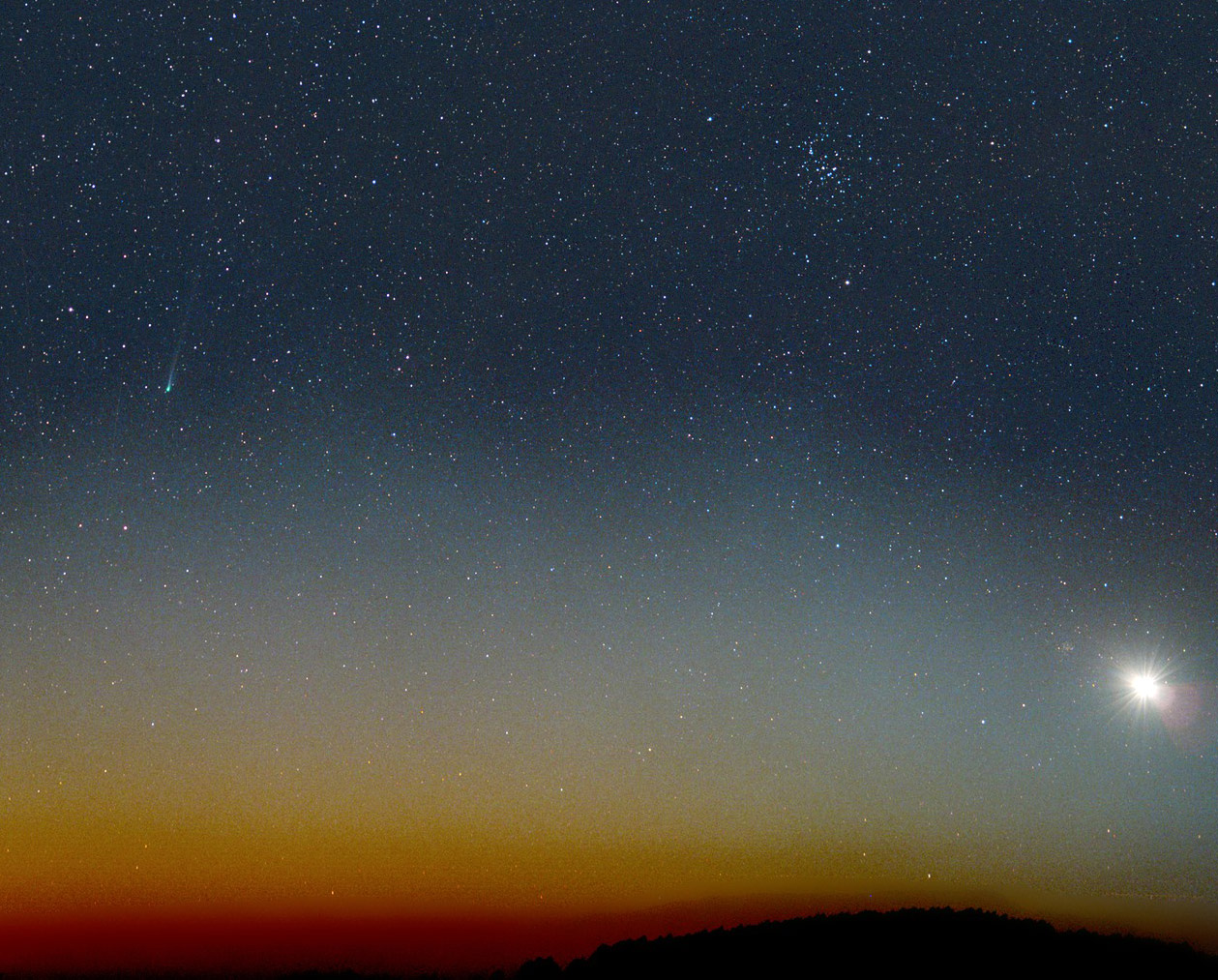
The comet starts this week very low in the dawn sky. You'll need a low view to the east-northeast on the mornings of September 9th, 10th, and maybe 11th. The farther north you live the better. The waning crescent Moon won't pose interference.
By the 13th or 14th the comet shifts to the low evening sky, just above the west-northwest horizon during early to mid-twilight. Day by day it will move leftward, but no higher, to stand barely over the west horizon on its perihelion date, the 17th. This is also its predicted date of peak brightness — possibly 2nd magnitude, not counting the ill effects of bright twilight and atmospheric extinction that low.
Given those factors, will it ever be even slightly visible to the naked eye? Time will tell. So will very clear air. See Bob King's New Comet Nishimura for more info and finder charts. More news is also in his update.
FRIDAY, SEPTEMBER 8
■ With September well under way, the Great Square of Pegasus is high in the east after dark balancing on one corner.
From the Great Square's left corner extends a big line of three 2nd-magnitude stars running to the lower left. They mark the head, backbone and leg of the constellation Andromeda. (The line of three includes the Square's corner, her head.) Upper left from the foot of this line, you'll find W-shaped Cassiopeia tilting up.
■ By 9 or 10 p.m. two of the best-known deep-sky objects are in high view in that area: the Double Cluster in Perseus under Cassiopeia, and the Great Andromeda Galaxy, M31, 8° above the middle star in that line of three.
They're both cataloged as 4th magnitude but to the naked eye they look rather different, the more so the darker your sky. See for yourself; they're plotted on the all-sky constellation map in the center of the September Sky & Telescope, which should be all the map you need to fix their locations well enough. Sky too bright? Use binoculars!
The two clusters of the Double Cluster (NGC 869 and NGC 884) are at very similar distances about 7,600 light-years away. M31, at 2.5 million light-years, is about 330 times farther.
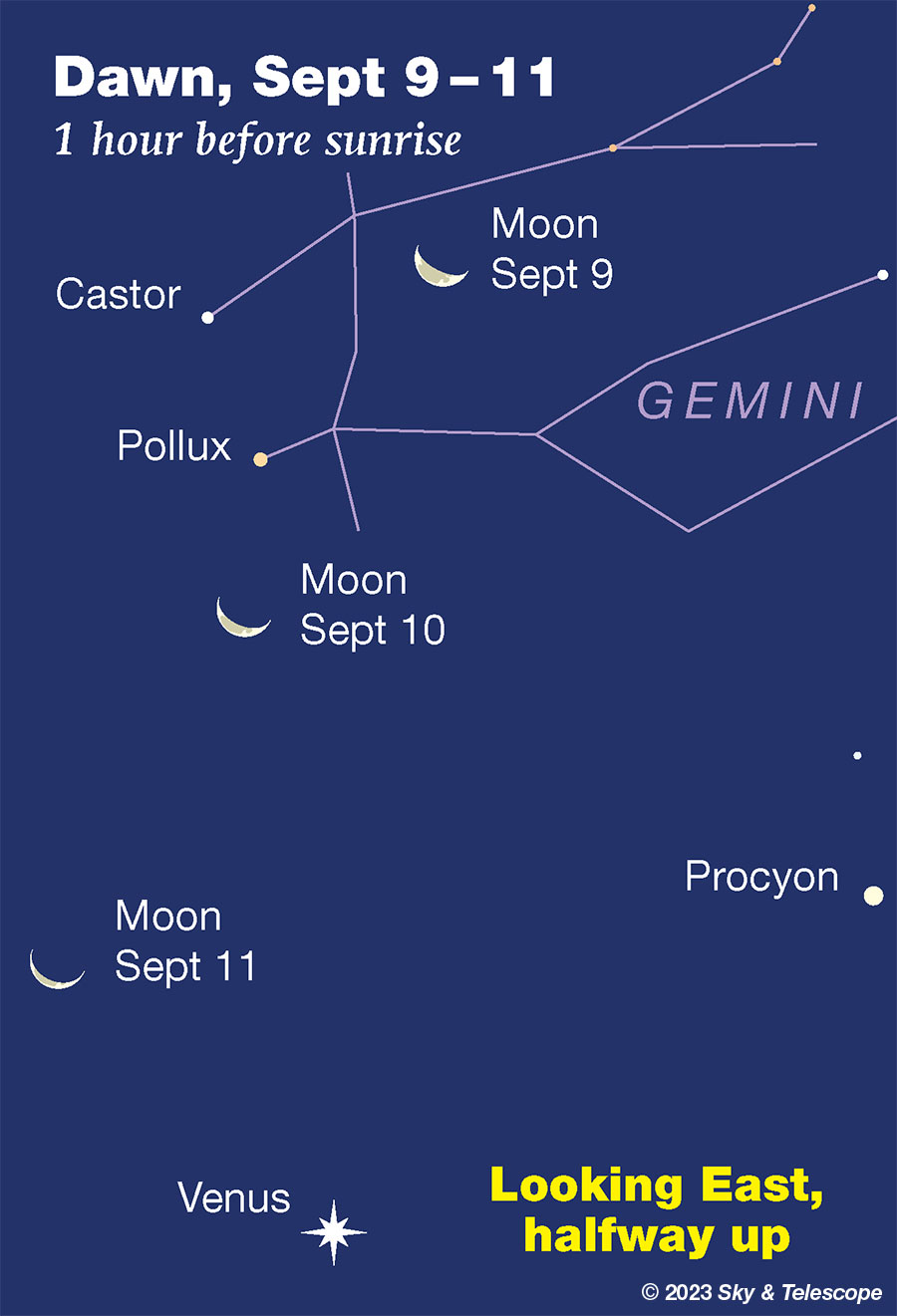
SATURDAY, SEPTEMBER 9
■ The waning crescent Moon rises around 3 a.m. Sunday morning the 10th, under Castor and Pollux. By early dawn they're a vertical lineup high in the east, as shown above. The line points down to Venus.
SUNDAY, SEPTEMBER 10
■ With the evening sky moonless, this is a great week for the Milky Way under a dark sky. When Deneb crosses your zenith (two hours after Vega does, meaning around 10 or 11 p.m.), the Milky Way does too — running straight up from your southwest horizon and straight down to your northeast horizon.
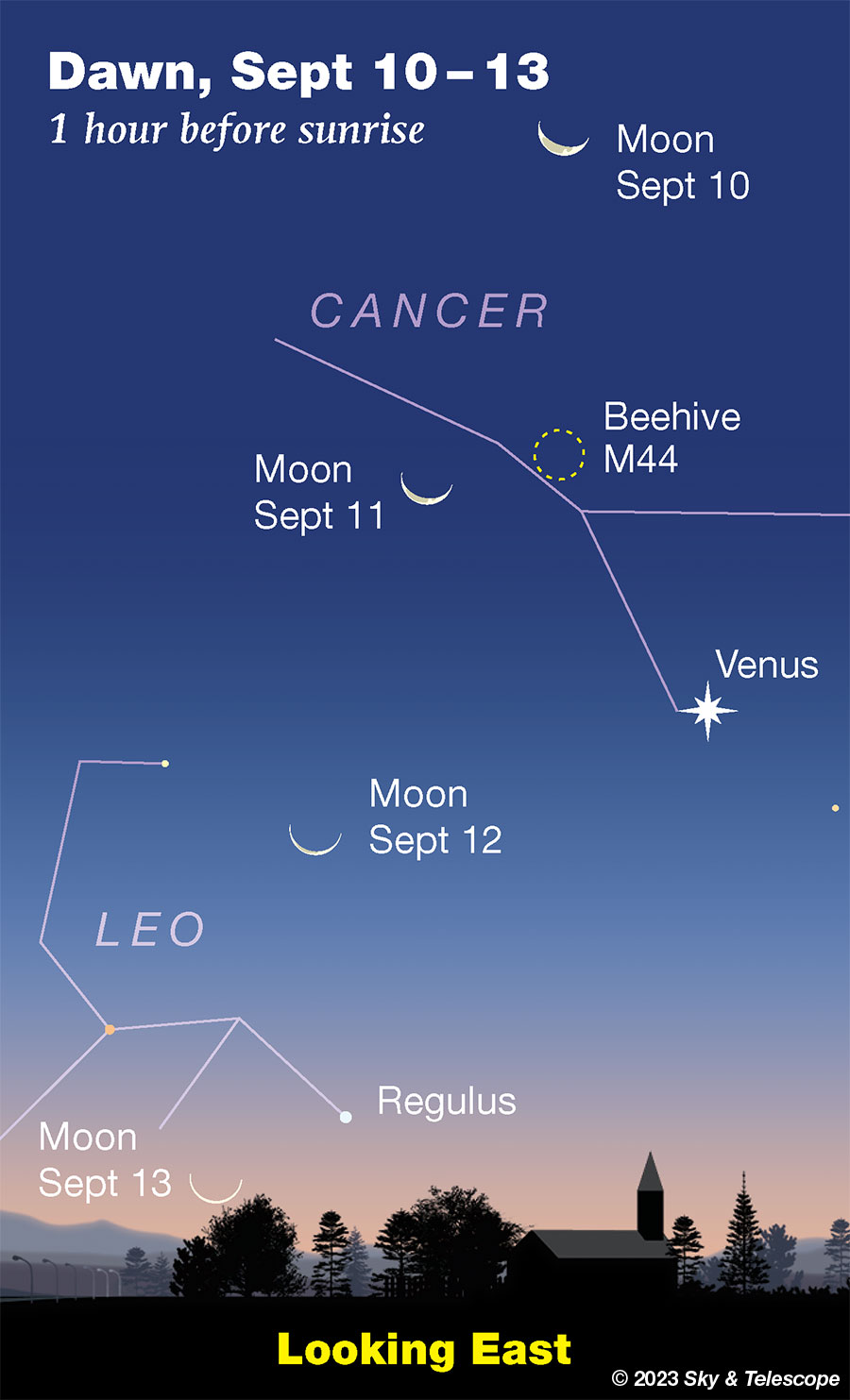
MONDAY, SEPTEMBER 11
■ You can see in the stars that the season is changing: We've reached the time of year when, just as the stars come out, Cassiopeia has climbed as high in the northeast as the Big Dipper has sunk in the northwest. Cas stands high in the northern sky in early evening during the chilly fall-winter half of the year. The Big Dipper takes over for the milder evenings of spring and summer.
Almost midway between them is Polaris. It's currently a little above the midpoint between the two.
TUESDAY, SEPTEMBER 12
■ As dusk turns to night, Arcturus twinkles due west. It's getting lower every week. Off to its right in the northwest, the Big Dipper is swinging down on its way to turning level.
Running upper right from Arcturus is the dimmer, narrow, kite-shaped pattern of its constellation, Boötes. The Kite extends a little more than two fists at arm's length to the upper right.
WEDNESDAY, SEPTEMBER 13
■ Vega now passes the zenith in late twilight, for those of us at mid-northern latitudes. Vega is bigger, hotter, and 50 times brighter than our Sun. But at a distance of 25 light-years it's 1.6 million times farther away. We're lucky that our eyes can see such things at all. As they evolved, they had no need to.
THURSDAY, SEPTEMBER 14
■ In the barren region midway between the handle of the Sagittarius Teapot and the bottom of boat-shaped Capricornus lies an asterism of four stars, all by itself. In ancient times Ptolemy cataloged it as the Tetrapleuron, the Quadrilateral. Being so isolated, it was not incorporated into the star pattern of either constellation. Nowadays the group is sometimes known as The Dogs (from a local tradition in southern China about monstrous dog-people in the mountains) or, more recently, as Herman's Cross, named for the late Maryland amateur astronomer Herman Heyn who rediscovered it and publicized it.
Herman's Cross is now highest on the meridian after dark. It lies more or less on its side and is about 1° by 2° in size. Its stars are all about magnitude 4½, making it a fine binocular target and visible to the naked eye in a moderately dark sky. It's such a distinctive little thing that once you know it you'll spot it often in photos of the Sagittarius Milky Way, demurely off to the east of the main attraction.
Two telescopic globular clusters, M75 and M55, lie a few degrees above and below it. They're 9th and 7th magnitude, respectively. See Matt Wedel's Binocular Highlights article and chart in the September Sky & Telescope, page 45.
■ New Moon (exact at 9:40 p.m. EDT).
FRIDAY, SEPTEMBER 15
■ That 1st-magnitude star high in the south after dark is Altair. To check that you've got it, look for its little marker Tarazed, 3rd magnitude, about a finger-width at arm's length to Altair's upper right.
About a fist to Altair's upper left is the little constellation Delphinus, the Dolphin, featured in the September Sky & Telescope, page 45.
Not quite as far straight above Altair is smaller, fainter Sagitta, the Arrow.
SATURDAY, SEPTEMBER 16
■ The closing days of summer (the equinox is coming on the night of September 22-23) always see the Sagittarius Teapot moving west of south during evening and tipping increasingly far over to the right, as if pouring out the last of summer.
SUNDAY, SEPTEMBER 17
■ Look very low in the west-southwest during twilight for the waxing crescent Moon. As twilight deepens, can you see Spica twinkling 3° or 4° lower right of it? Use binoculars.
And next, look due west about 25° to the right of the Moon (far below Arcturus) for Comet Nishimura at perihelion! You brought those binoculars, right? You have only a narrow time window between when twilight is still too bright and the comet gets too low and sets.
This Week's Planet Roundup
Mercury is still hidden very low in the glow of sunrise.
Venus (brilliant at magnitude –4.7, in dim Cancer) is rapidly getting higher in the east before and during dawn. By the end of this week it comes up over the east horizon nearly two hours before dawn's first light.
Mars is out of sight behind the glare of the Sun and will remain so for the rest of the year.
Jupiter (magnitude –2.6, in Aries) rises in the east-northeast not long after dark. It shines highest in the hours before dawn.
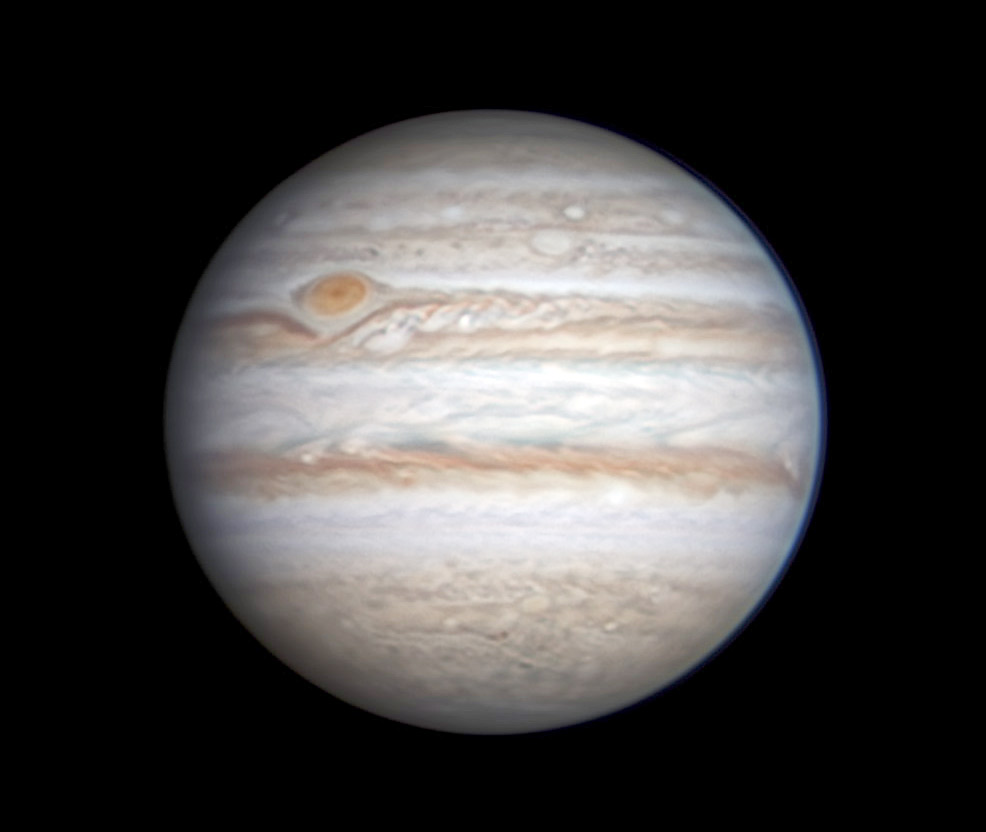
Saturn (magnitude +0.5, in dim Aquarius) is the "star" low in the southeast in twilight. It's two weeks past opposition. It shines at a good height for telescopic observing by 10 p.m., by which time Fomalhaut is twinkling two fists at arm's length below it. Saturn is highest in the south around 11 or midnight.
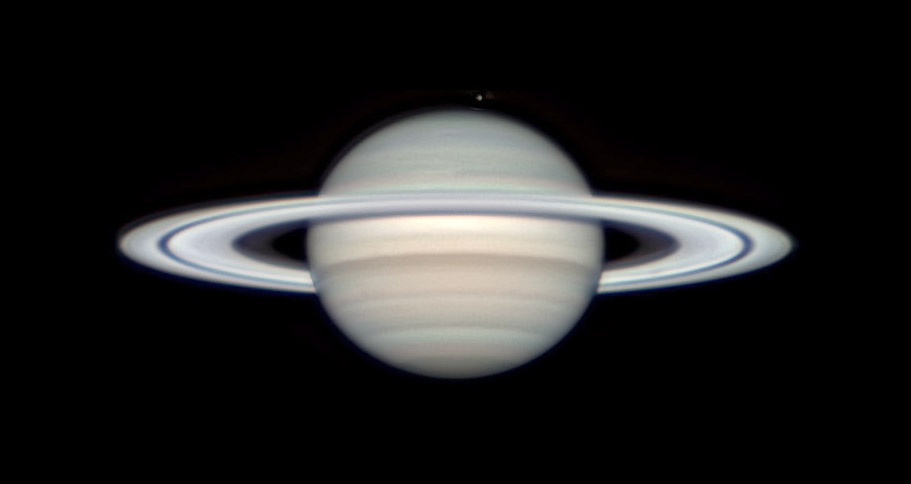
Uranus, magnitude 5.7 in Aries, is nice and high in the hours before dawn, 7° or 8° east of Jupiter.
Neptune, magnitude 7.8 at the Aquarius-Pisces border, is fairly high in the southeast by 10 p.m., 24° east of Saturn. Neptune is nearing its September 19th opposition.
All descriptions that relate to your horizon — including the words up, down, right, and left — are written for the world's mid-northern latitudes. Descriptions and graphics that also depend on longitude (mainly Moon positions) are for North America.
Eastern Daylight Time (EDT) is Universal Time minus 4 hours. UT is sometimes called UTC, GMT, or Z time.
Want to become a better astronomer? Learn your way around the constellations. They're the key to locating everything fainter and deeper to hunt with binoculars or a telescope.
This is an outdoor nature hobby. For a more detailed constellation guide covering the whole evening sky, use the big monthly map in the center of each issue of Sky & Telescope, the essential magazine of astronomy.
Once you get a telescope, to put it to good use you'll need a much more detailed, large-scale sky atlas (set of charts). The basic standard is the Pocket Sky Atlas (in either the original or Jumbo Edition), which shows all stars to magnitude 7.6.

Next up is the larger and deeper Sky Atlas 2000.0, plotting stars to magnitude 8.5; nearly three times as many. The next up, once you know your way around, are the even larger Interstellarum atlas (stars to magnitude 9.5) or Uranometria 2000.0 (stars to mag 9.75). And be sure to read How to Use a Star Chart with a Telescope. It applies just as much to charts on your phone or tablet as to charts on paper.
You'll also want a good deep-sky guidebook. A beloved old classic is the three-volume Burnham's Celestial Handbook. An impressive more modern one is the big Night Sky Observer's Guide set (2+ volumes) by Kepple and Sanner.
Do computerized telescopes replace charts? Not for beginners I don't think, especially not on mounts and tripods that are less than top-quality mechanically. Unless you really prefer spending your time getting finicky technology to work rather than getting to know the sky. As Terence Dickinson and Alan Dyer say in their Backyard Astronomer's Guide, "A full appreciation of the universe cannot come without developing the skills to find things in the sky and understanding how the sky works. This knowledge comes only by spending time under the stars with star maps in hand."
But finding very faint objects the old-fashioned way with charts isn't simple either. See How to Use a Star Chart with a Telescope to learn the tricks.
![]() Audio sky tour. Out under the evening sky with your
Audio sky tour. Out under the evening sky with your
earbuds in place, listen to Kelly Beatty's monthly
podcast tour of the naked-eye heavens above. It's free.
"The dangers of not thinking clearly are much greater now than ever before. It's not that there's something new in our way of thinking, it's that credulous and confused thinking can be much more lethal in ways it was never before."
— Carl Sagan, 1996
"Facts are stubborn things."
— John Adams, 1770
 1
1









Comments
Zubenelgenubi 61
September 10, 2023 at 11:18 pm
It will be interesting to see if anyone is able to view this comet in the evening sky. At latitude 39, it will never set more than an hour after sunset- comparable to the view on the morning of the 12th. Images? Probably. People with GoTo? Maybe.
You must be logged in to post a comment.
You must be logged in to post a comment.